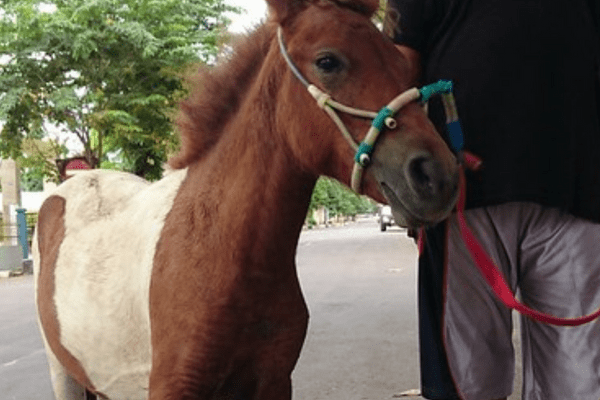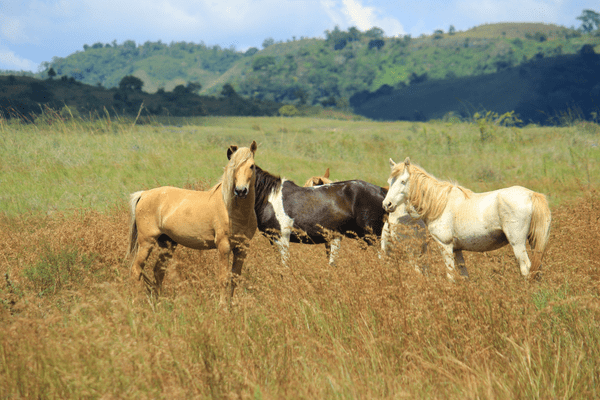The Sumbawa Pony, commonly referred to as ‘kuda-Sumbawa’ in Indonesian dialect, is a notable breed that hails from Sumbawa Island in Indonesia and bears its namesake’s characteristics. A breed with significant historical importance, this pony shares similarities with Sumba or Sandalwood Ponies created through crossbreeding local ponies with those from Arabian heritage.
However, its lineage can be found among Mongolian Horses and ancient Chinese stock, attesting to its robust and adaptable nature. This article seeks to provide an in-depth examination of the Sumbawa Pony by looking into its roots, attributes, and significance within Indonesia’s equine history.
Origins:
Sumbawa Island’s unique blend of indigenous horse breeds and those brought by traders and settlers over the years led to the development of the Sumbawa Pony. These influences converged, resulting in a pony well-adapted to the local climate and terrain.
History:
Up until recently, historical insights into Southeast Asia’s equine heritage remained somewhat scarce. This can be attributed to limited studies conducted and a European bias among those published. But in 2004, with Peter Boomgaard’s diligent research efforts and publications such as his seminal book on Southeast Asian horses a new era began unfolding.
One of the fascinating tales from Sumbawa Island history revolves around horse trading. This trade flourished for centuries, drawing in breeders from Sumba known for exporting Sandalwood Ponies while others from Sumbawa competed fiercely with them for export markets – all this competition being further complicated by Timor and Savu breeders as well.
Substantiating further into Sumbawa’s history, there’s compelling evidence suggesting the introduction of the Sumbawa Pony was initiated by Javanese settlers from Majapahit Empire’s Javanese settlements during their dominance during 14th-century rise to prominence and influence across Sumbawa (especially Bima and West Sumbawa sultans reportedly owned numerous Ponies! ).
As far as their ancestry goes, Sumbawa breed and Sumba Pony horses are believed to be related to Mongolian Horses. Some ancient documents, including Dutch accounts that mention Arabian bloodlines for these Indonesian horses such as Sumbawa Ponies. Unfortunately there’s limited proof of such links within Indonesian context.
Characteristics of the Sumbawa Pony:
Origin: Native to Sumbawa Island in Indonesia.
Size: Typically stands between 11.3 to 12.3 hands high.
Build: Compact and sturdy body, reflecting its strength and endurance.
Head: Short with a straight profile, accompanied by alert and attentive ears.
Coat: Exhibits a range of colors, including bay, black, grey, and chestnut.
Legs: Strong and robust, equipped with durable hooves suitable for navigating varied terrains.
Temperament: Generally docile and friendly. Despite their energetic disposition, they are known for their patience and responsiveness.
Lineage: Descends from Mongolian Horses and ancient Chinese stock, resulting in a unique blend of attributes.
Similarities: Shares certain characteristics with the Sumba or Sandalwood Pony, another breed from the Indonesian islands, especially due to some shared ancestry.
Adaptability: Highly adaptable to diverse environments, thanks to its origins in the varied landscapes of Sumbawa Island.
Functionality: Historically used for transportation, agricultural tasks, and traditional racing events in Indonesia.

Temperament and Behavior:
Sumbawa Ponies are beloved horses renowned for their gentle temperament and low maintenance needs, making them an excellent choice for beginner riders or children.
But their energetic personalities also make them excellent performers in various equestrian disciplines – especially their loyalty towards humans as partners and willingness to work in partnership together are two other hallmarks of excellence that stand them apart.
Uses and Performance:
Although historically these ponies were used primarily for transportation and light agricultural work on the island, their capabilities go far beyond these traditional roles. They excel at various equestrian disciplines–ranging from dressage to endurance racing–providing an invaluable service.
Sumbawa and other parts of Indonesia often witness pony races as an expression of speed and agility from its rider as well as celebrating its deep-rooted equestrian culture.
Conservation and Status:
Due to modernization and mechanized transportation, traditional roles of the Sumbawa Pony have decreased; however, local communities and equestrian enthusiasts have made concerted efforts to maintain its legacy by developing breeding programs and events to promote its unique qualities and preserve this breed of horse in both Indonesia and beyond.

